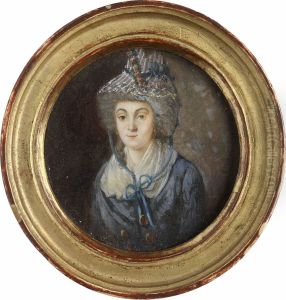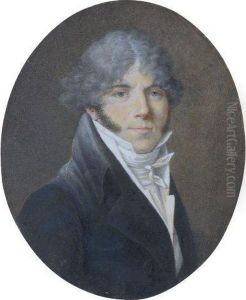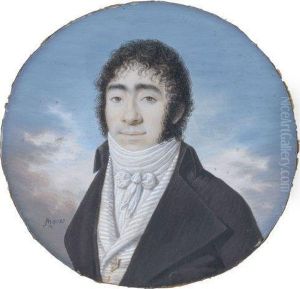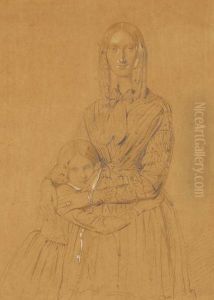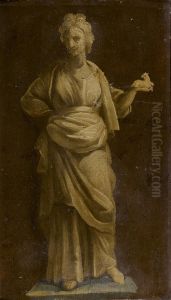Jean Marie Joseph Ingres Paintings
Jean-Auguste-Dominique Ingres was a French Neoclassical painter, born on August 29, 1780, in Montauban, France. He was profoundly influenced by past artistic traditions and aspired to become the guardian of academic orthodoxy against the ascendant Romantic style represented by his contemporary Eugène Delacroix. Ingres's father, Jean-Marie-Joseph Ingres, was a minor painter and sculptor, and under his tutelage, Ingres first learned to draw and play the violin.
Ingres initially studied at the Academy of Toulouse before moving to Paris to study under the renowned Jacques-Louis David, the preeminent painter of the Neoclassical style. Despite his later acclaim, Ingres's early career was marked by disappointment when his 1801 submission to the Prix de Rome was not well received. However, he finally won the prestigious prize in 1804 with his painting 'The Ambassadors of Agamemnon in the Tent of Achilles.' This allowed him to attend the French Academy in Rome, where he spent a significant period from 1806 to 1820, with a short interlude in Florence.
In Rome, Ingres developed his signature style, characterized by precise draughtsmanship and a polished surface finish. His adherence to classical ideals and emphasis on line over color set him apart from his contemporaries. While he considered himself a painter of history in the tradition of Raphael and Nicolas Poussin, Ingres also became renowned for his portraits, in which he captured the essence and personality of his sitters with remarkable psychological depth. His famous works include 'The Grand Odalisque' and 'The Turkish Bath,' which show his unique ability to blend classical form with a sensual portrayal of the female figure.
Upon his return to France, Ingres's works were met with mixed reviews, and he struggled to achieve the same level of success he enjoyed in Italy. However, his fortunes changed in 1824 with the exhibition of 'The Vow of Louis XIII,' which was hailed as a masterpiece and solidified his position as a leader of the French school of painting. In 1834, Ingres became the director of the French Academy in Rome, a position he held until 1841, when he returned to Paris.
Throughout the latter half of his career, Ingres continued to paint, receive honors, and participate in the artistic life of Paris. His later works include 'The Apotheosis of Homer' and 'The Martyrdom of Saint Symphorian.' Despite the changing tastes of the era, he remained committed to the Neoclassical style and was a vocal critic of the Romantic and Realist movements. Ingres passed away on January 14, 1867, leaving behind a body of work that would influence generations of artists, including the Symbolists and Modernists. His legacy is marked by his exceptional talent for drawing, his controversial yet influential views on art, and his commitment to the values of clarity, form, and line in painting.
